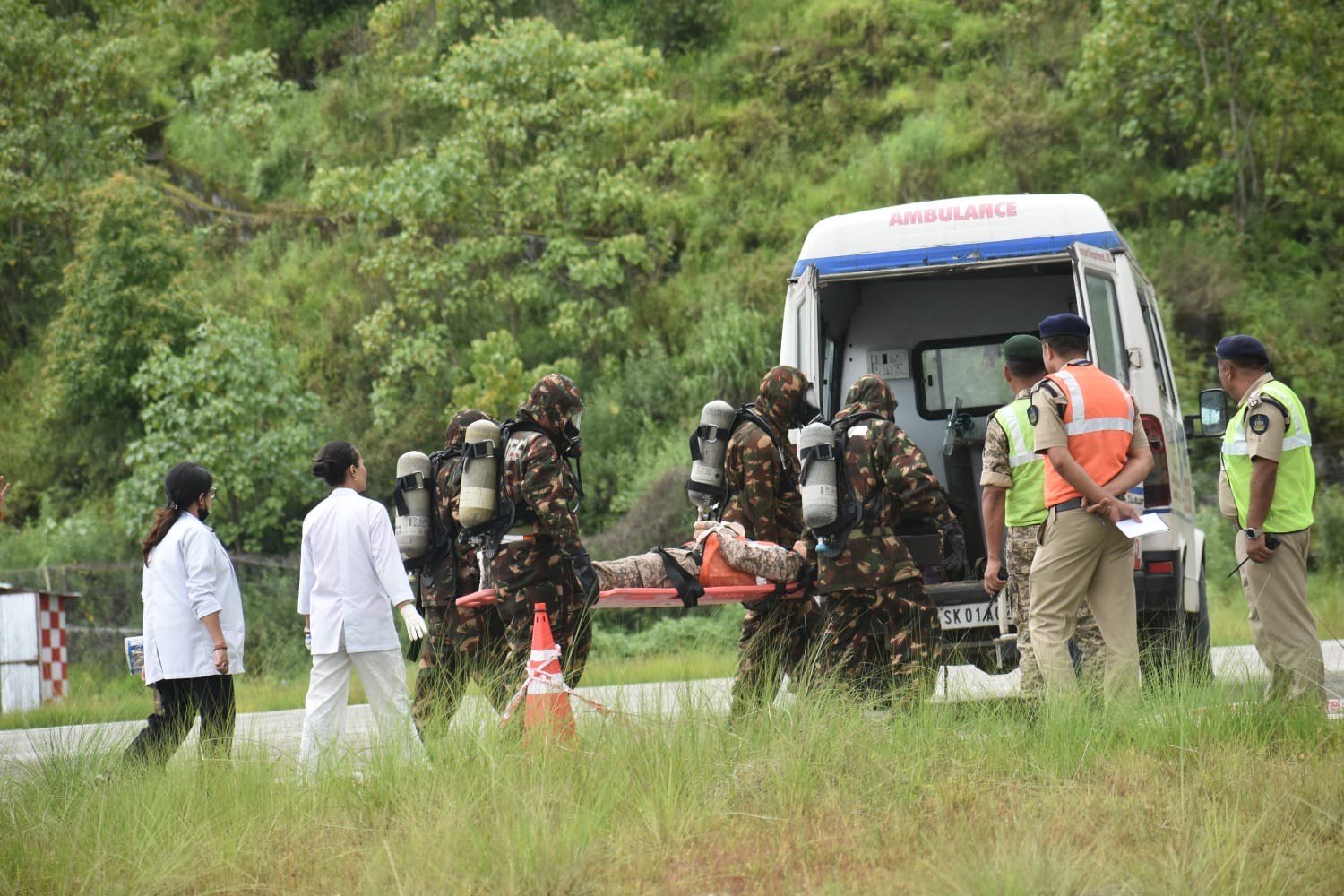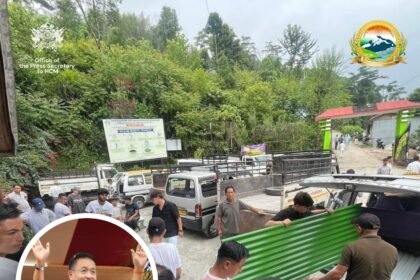PAKYONG: In a move to strengthen emergency preparedness and reinforce coordinated response mechanisms, a full-scale mock emergency exercise was conducted on Friday at Pakyong Airport. The exercise was designed to simulate a real-time aircraft accident scenario and aimed at evaluating the airport’s crisis management capabilities, following heightened awareness around aviation safety in the aftermath of the recent Ahmedabad crash.
Organised under the supervision of the Airports Authority of India (AAI), the exercise involved the coordinated participation of multiple agencies, including the National Disaster Response Force (NDRF), Sikkim State Fire and Emergency Services, AAI Fire and Rescue personnel, staff from the local Primary Health Centre (PHC), and various district-level support agencies. The simulation tested not only the responsiveness and efficiency of each participating unit but also their ability to collaborate seamlessly under pressure.
The drill began with a simulated distress call reporting a crash involving an inbound aircraft. This triggered a full-scale emergency response protocol involving rapid deployment of fire tenders, medical teams, security personnel, and disaster management units. Timed drills were conducted to measure the speed and efficiency of fire containment, victim evacuation, triage, and communication with Air Traffic Control (ATC) and local authorities.
Special emphasis was laid on inter-agency coordination, particularly between AAI’s operational wings, including ATC and Fire Services, and external emergency units such as the State Fire Service and medical responders. The objective was to ensure that all personnel are well-versed with their roles and responsibilities during a crisis situation and are able to function as a cohesive team.
Observers from AAI and district administration closely monitored the proceedings, noting key takeaways and recommending enhancements in communication flow, resource mobilisation, and on-ground execution. The exercise also served as an opportunity to familiarise newer staff and first responders with standard operating procedures in aviation emergencies.
Authorities have emphasised that such regular drills are essential to maintaining operational readiness and ensuring that any real-life incidents can be managed with maximum efficiency and minimal risk to life and property.
- IPR Report





